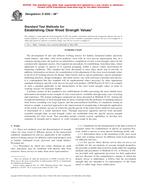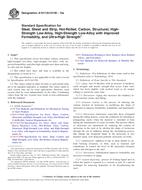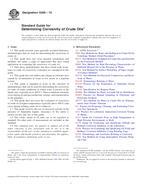1.1 This test method covers unirradiated uranium-plutonium mixed oxide having a uranium to plutonium ratio of 2.5 and greater. The presence of larger amounts of plutonium (Pu) that give lower uranium to plutonium ratios may give low analysis results for uranium (U) (1), if the amount of plutonium together with the uranium is sufficient to slow the reduction step and prevent complete reduction of the uranium in the allotted time. Use of this test method for lower uranium to plutonium ratios may be possible, especially when 20 to 50 mg quantities of uranium are being titrated rather than the 100 to 300 mg in the study cited in Ref (1). Confirmation of that information should be obtained before this test method is used for ratios of uranium to plutonium less than 2.5.
1.2 The amount of uranium determined in the data presented in Section was 20 to 50 mg. However, this test method, as stated, contains iron in excess of that needed to reduce the combined quantities of uranium and plutonium in a solution containing 300 mg of uranium with uranium to plutonium ratios greater than or equal to 2.5. Solutions containing up to 300 mg uranium with uranium to plutonium ratios greater than or equal to 2.5 have been analyzed (1) using the reagent volumes and conditions as described in Section 10.
1.3 This standard does not purport to address all of the safety concerns, if any, associated with its use. It is the responsibility of the user of this standard to establish appropriate safety and health practices and determine the applicability of regulatory limitations prior to use. For specific hazard statements, see Section 8.
Product Details
- Published:
- 01/01/1996
- Number of Pages:
- 9
- File Size:
- 1 file , 52 KB


